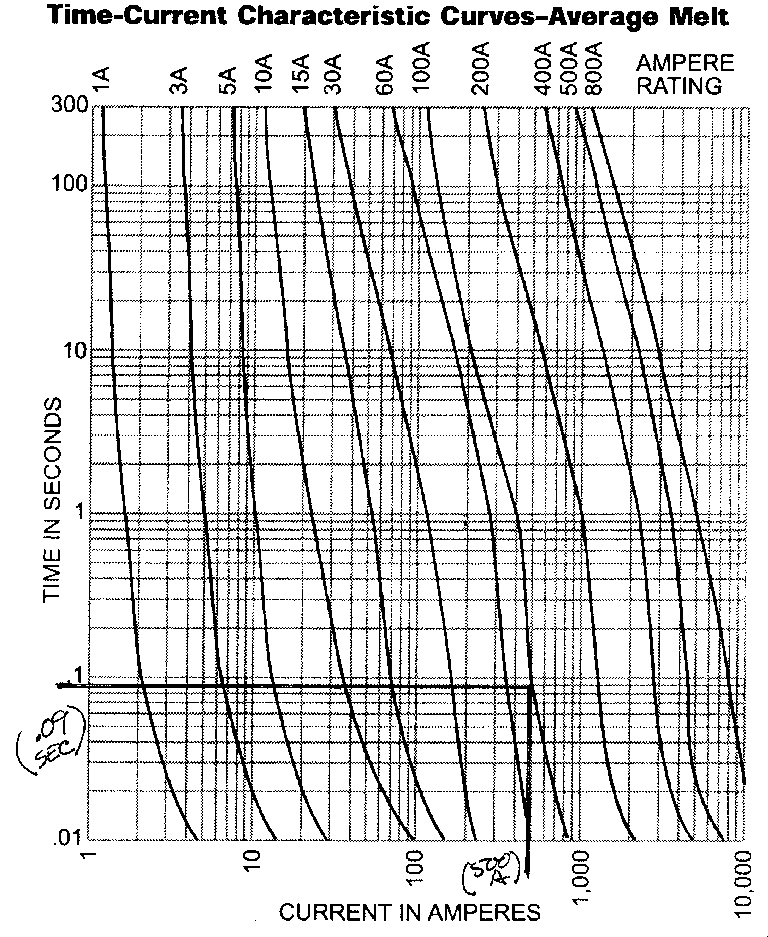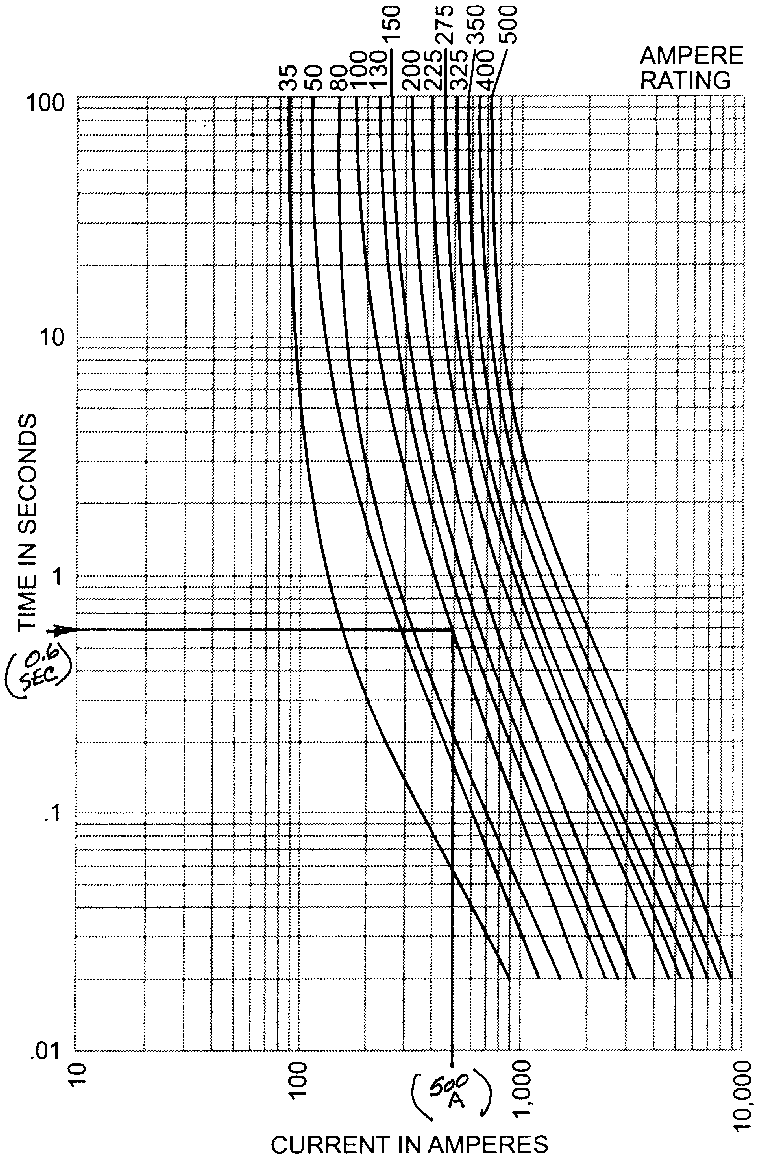

|
Bob's Shop Notes: |
For a number of years, we've recommended that the fat breaker (40-100 amps) for the alternator b-lead protection be moved from the instrument panel (like over 100,000 certified ships) and replaced with a fuse out on the firewall adjacent to the starter contactor. Points to support this suggestion include:
|

|

|
There's a another kind of fuse commonly found in aircraft power distribution systems and other high current DC power systems. It's the Type ANL current limiter. Click here to download the ANL data sheets It's a device that still behaves like a fuse but with much longer time constants. It's designed to be a protecting from hard faults as opposed to continuous but small overloads. Curves for these devices is shown at the left. Click here for larger image. To keep the apples-for-apples comparison, I've drawn in the analysis lines for putting a 500A fault on a 100A ANL current limiter. Note that this device will take over 6 times longer to open than it's fast acting JJS cousin. This may seem like a really big difference but in a hard fault of this circuit, it's not uncommon to see currents of 1000A or more . . . even the stodgy ANL will open in a few tens of milliseconds . . . it will all be over before you know it! Click here to download the JJS data sheets. Unlike our in-line fuse kit installed with terminals and bolts, the ANL current limiter needs a mounting base. The size of the ANL system is larger but it is mechanically more robust. When I was selecting a product to stock for this task several years ago, the in-line, JJS seemed like the best way to go. B&C already stocks the ANL series limiters for use in several kits they offer to certified aircraft . . . since they already have ANL, it seems like a good thing to phase out the JJS inline-kits and substitute the ANL current limiters and companion mounting blocks. They're only a few dollars more and easier to install and maintain. There's nothing wrong with the JJS in-line fuse . . . if you've already purchased this kit, go ahead and use it. If you ever need a replacement fuse, they're available from local electrical contractor supply houses. If you have trouble finding spare, I can get them for you as well. There are some noteworthy characteristics of the ANL series devices. Note that they will carry nearly 2X their rated current indefinitely. This makes them behave more like the fusible links we've described elsewhere on this website. So, if you wish to size an ANL current limiter more in line with the output rating of your alternator, you could do so without regard to the "headroom" we suggested for the use of JJS fuses. The long time constant and overload capability of ANL current limiters are not subject to the nuisance tripping we encountered occasionally with the much faster fuses in this application. Current limiters are used in large aircraft to protect long power distribution leads that carry huge starter-generator currents and even feeds from batteries. This level of protection is dictated in large aircraft or aircraft certified as flight for hire . . . you could certainly add such devices to the battery leads in your homebuilt but there is nothing in the history of small airplanes that suggest this is a necessary or even useful thing to do . . . it adds cost and parts count and offers no significant protection. Fly comfortably. 'lectric Bob . . . |
 Click here to contact Bob at AeroElectric Connection Click here to contact Bob at AeroElectric Connection |